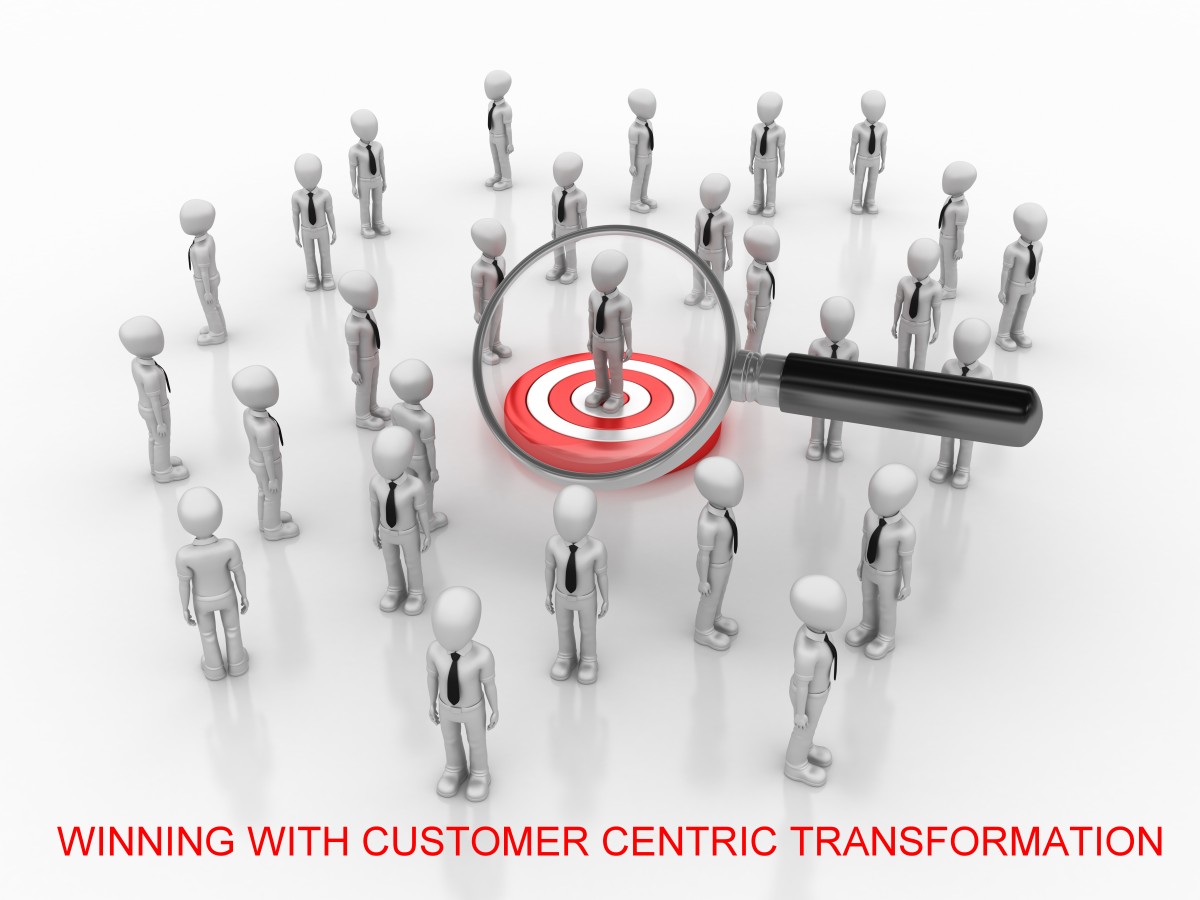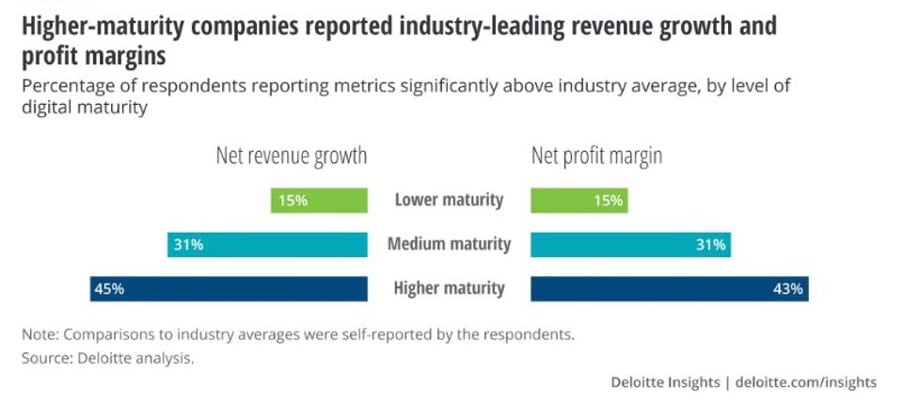
What a digital transformation can accomplish? Operational excellence, strong business processes, better customer experience, and so on. While these objectives are conceivable, why companies are reporting high failure rates for digital transformation? The foremost reason could be, many of them focus on the financial and technical part of digital transformation and ignore the human aspect. Focusing on employees, process owners, and customer transformation becomes important to achieve ubiquitous optimization.
Digital Transformation Building Blocks

Customer Transformation with Digital
Digital transformation starts and ends with the customer, it is, therefore, essential to focus on the transformation of customer experience, relationships, and processes. Only when you have a happy customer, you may probably survive any inefficiencies in accounts payable or employee benefits tracking.
According to MIT, A whopping $4.7 trillion was spent on digital transformation, it yielded only 19% of customers reporting significant improvement in the experiences, this shows why it is necessary to focus on applications that are visible and beneficial to customers. On the other hand, digitally mature organizations have turned their investments in transformation into revenue by overwhelming customers with value. Digital transformation efforts that put customers at the centre can generate high confidence from C-level executives and lead to more funds, as the business cases for customer-centric digital transformation projects are easier to create, & very defensible

These insights from Deloitte clearly show the correlation between an organization’s digital transformation maturity and the benefits they gain in various terms including customer satisfaction.
No matter how wonderful a concept you offer, if it does not include what customers want, it will have an underestimated demand. In order to successfully develop and deliver constantly evolving digital offerings, one must identify and develop a reservoir of organizational knowledge about both customer problems and potential solutions. Today customers want performance, responsiveness, authenticity, and consistency at all touchpoints, so the winners will be those companies that are in tune with this.
Challenges in customer transformation
- Fragmented customer data is trapped in the organizational silos of the sales, customer service, marketing, and finance departments.
- Lack of holistic customer view.
- Lack of harmonized data.
- Focusing only on customer acquisition & service.
- Inability to analyze customer preferences.
These major challenges hinder the success of the digital transformation.
Let’s take an example of Blockbuster Vs Netflix
Blockbuster, a once-famous US video retailer, focused on analytics to improve the profitability of its in-store video mix, whereas its rival Netflix focused on customer experience by providing recommendation engines that allowed its customers to continue watching the videos of their interest. As a result, Blockbuster filed bankruptcy in 2010. There were certainly other factors too; however digital transformation efforts that don’t put the customer first can waste both money and effort.
Tools for Customer-centric Digital Transformation
• Data Governance:
Silos block the type of collaboration needed to create value for customers, data governance can help to prevent silos. AI tools, cross-functional teams, and process mining tools can help to get an end-to-end view of CX and provide detailed, data-driven information about how key processes are performing.
• Customer Insights:
Businesses generate customer information across their life cycle, right from what triggers purchases to recommend your products/services to others, showcases a particular strength & weakness of your product. It is critical to analyze these customer insights and figure out how to engage the customers, what they want, and how they interact with your brand.
For example, Tesla, unlike other automakers and tech companies working on autonomous driving, doesn’t only rely on an internal test fleet or simulations to collect data. The automaker is leveraging its large customer fleet of electric vehicles equipped with an extensive array of sensors to collect data and improve its driver-assist features.
• Design Thinking:
Design thinking is laser-focused on the end user’s needs and provides a narrower definition of the problem that needs to be solved. It must be informed by the rich data insights about the customer and their environments, which can help to test the prototype rapidly and refine it based on customer feedback before launching.
Example- Nike has been using design thinking to improve the user experience by understanding what they need and looks for partners that help them with user insights which trickle through the company and inspires the designers. This helps Nike focus on the needs of its most loyal customers.
• Harmonized CX:
The increasing channels and customer touchpoints necessitate consistency and a seamless multi-channel experience. In this age of hyper-personalization, providing harmonized CX and UX is crucial. It requires a unified single view of the customer that combines data from all interaction points to extend such experiences. A customer may interact with your business through mobile apps, websites, social media, virtual assistants, so there should be consistency in message and experience across all channels.
Enterprises that keep the customer at the core and follow a data-driven mindset are the most likely to succeed with a digital transformation initiative. Begin your digital transformations with the customer experience, use consumer data to make informed decisions, commit a design thinking approach to create customer-centric experiences, and harmonize your CX to create an evidence-based business case that justifies the investment. Digital transformation does not have an endpoint, also the path isn’t straightforward. With changing customer preferences, behavior and demographics, the companies need to continuously evolve and learn about the customers to keep the CX fresh and competitive.



